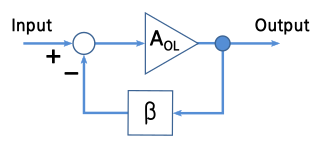
An L pad is a network composed of two impedances that typically resemble the letter capital "L" when drawn on a schematic. It is commonly used for attenuation and for impedance matching.

An L pad is a network composed of two impedances that typically resemble the letter capital "L" when drawn on a schematic. It is commonly used for attenuation and for impedance matching.
A speaker L pad is a special configuration of rheostats used to control volume while maintaining a constant load impedance on the output of the audio amplifier. [1] It consists of a parallel and a series rheostat connected in an "L" configuration. As one increases in resistance, the other decreases, thus maintaining a constant impedance, at least in one direction. To maintain constant impedance in both directions, a "T" pad must be used. In loudspeaker systems having a crossover network, it is necessary to maintain impedance to the crossover; this avoids shifting the crossover point.
A constant-impedance load is important in the case of vacuum tube power amplifiers, because such amplifiers do not work as efficiently when terminated into an impedance greatly different than their specified output impedance. Maintaining constant impedance is less important In the case solid state electronics.
In high frequency horns, the L Pad is seen by the crossover, not the amp. L pads may not necessarily use continuously variable rheostats, but instead a multi-position rotating selector switch wired to resistors on the back. Tapped transformers are not L pads; they are autoformers. L pads can also be used at line level, mostly in pro applications.
The L pad attenuates the signal by having two separate rheostats connected in an "L" configuration (hence the name). One rheostat is connected in series with the loudspeaker and, as the resistance of this rheostat increases, less power is coupled into the loudspeaker and the loudness of sound produced by the loudspeaker decreases. The second rheostat is connected between the input and ground (earth). As the first rheostat increases in resistance, the second rheostat decreases in resistance, keeping the load impedance (presented at the input of the L pad) constant. The second rheostat usually has a special taper (function of resistance versus rotation) to accommodate the need for constant input impedance.
In RF (radio frequency) applications, the L network is the basis of many common impedance matching circuits, such as the pi network employed in amplifiers and the T network that is common in transmatches.
The L network relies on a procedure known as series-parallel transformation. For every series combination of resistance, RS, and reactance, XS, there exists a parallel combination of RP and XP that acts identically to the voltage applied across the series combination. In other words, the series components and the parallel components provide the same impedance at their terminals. The transformation ratio is the ratio of the input and output impedances of the impedance matching network.
The series-parallel transformation allows the input impedance to be dropped down to lower impedances while sustaining a voltage across the circuit. This system works in reverse as well. The equations needed for this transformation are as follows:
For the resistance Rs and reactance Xs in series, Rp and Xp exist as a parallel combination. One simply needs to know the input impedance Rp and to choose the output impedance Rs. Or conversely know Rs and choose Rp. Keep in mind that Rp must be larger than Rs. Because reactance is frequency dependent the L network will only transform the impedances at one frequency.
Inclusion of two L networks back to back creates what is known as a T-network. T-networks work well for matching an even greater range of impedances.

If a source and load are both resistive (i.e. Z1 and Z2 have zero or very small imaginary part) then a resistive L pad can be used to match them to each other. As shown, either side of the L pad can be the source or load, but the Z1 side must be the side with the higher impedance. [2]
There is an inherent insertion loss
where = power dissipated by load and = power dissipated by the pad resistors. Large positive numbers means loss is large.
The loss is a monotonic function to the impedance ratio. Higher ratios require higher loss.
Speaker L pads are designed to match the impedance of the speaker, so they were commonly available with 4, 8, and 16 Ω impedances.

A Negative-feedback amplifier is an electronic amplifier that subtracts a fraction of its output from its input, so that negative feedback opposes the original signal. The applied negative feedback can improve its performance and reduces sensitivity to parameter variations due to manufacturing or environment. Because of these advantages, many amplifiers and control systems use negative feedback.

In electronics, a common-base amplifier is one of three basic single-stage bipolar junction transistor (BJT) amplifier topologies, typically used as a current buffer or voltage amplifier.

In electronics, impedance matching is the practice of designing the input impedance of an electrical load or the output impedance of its corresponding signal source to maximize the power transfer or minimize signal reflection from the load.

In electronics, a voltage divider is a passive linear circuit that produces an output voltage (Vout) that is a fraction of its input voltage (Vin). Voltage division is the result of distributing the input voltage among the components of the divider. A simple example of a voltage divider is two resistors connected in series, with the input voltage applied across the resistor pair and the output voltage emerging from the connection between them.

In electronics, a common collector amplifier is one of three basic single-stage bipolar junction transistor (BJT) amplifier topologies, typically used as a voltage buffer.
In electronics, especially audio and sound recording, a high impedance bridging, voltage bridging, or simply bridging connection is one in which the load impedance is much larger than the source impedance. In cases where only the load impedance can be varied, maximizing the load impedance serves to minimize the current drawn by the load, and maximize the voltage signal across the load. Essentially, the load is measuring the source's voltage without affecting it. In cases where only the source impedance can be varied, minimizing the source impedance will maximize the power delivered to the load and, as before, maximize the voltage signal across the load.

In an audio system, the damping factor gives the ratio of the rated impedance of the loudspeaker to the source impedance. Only the resistive part of the loudspeaker impedance is used. The amplifier output impedance is also assumed to be totally resistive. The source impedance includes the connecting cable impedance. The load impedance and the source impedance are shown in the diagram.

The input impedance of an electrical network is the measure of the opposition to current (impedance), both static (resistance) and dynamic (reactance), into the load network that is external to the electrical source. The input admittance (1/impedance) is a measure of the load's propensity to draw current. The source network is the portion of the network that transmits power, and the load network is the portion of the network that consumes power.

The output impedance of an electrical network is the measure of the opposition to current flow (impedance), both static (resistance) and dynamic (reactance), into the load network being connected that is internal to the electrical source. The output impedance is a measure of the source's propensity to drop in voltage when the load draws current, the source network being the portion of the network that transmits and the load network being the portion of the network that consumes.

In electronics, a common-gate amplifier is one of three basic single-stage field-effect transistor (FET) amplifier topologies, typically used as a current buffer or voltage amplifier. In this circuit the source terminal of the transistor serves as the input, the drain is the output and the gate is connected to ground, or "common," hence its name. The analogous bipolar junction transistor circuit is the common-base amplifier.
The cascode is a two-stage amplifier that consists of a common-emitter stage feeding into a common-base stage.
The negative impedance converter (NIC) is a one-port op-amp circuit acting as a negative load which injects energy into circuits in contrast to an ordinary load that consumes energy from them. This is achieved by adding or subtracting excessive varying voltage in series to the voltage drop across an equivalent positive impedance. This reverses the voltage polarity or the current direction of the port and introduces a phase shift of 180° (inversion) between the voltage and the current for any signal generator. The two versions obtained are accordingly a negative impedance converter with voltage inversion (VNIC) and a negative impedance converter with current inversion (INIC). The basic circuit of an INIC and its analysis is shown below.

In microwave and radio-frequency engineering, a stub or resonant stub is a length of transmission line or waveguide that is connected at one end only. The free end of the stub is either left open-circuit or short-circuited. Neglecting transmission line losses, the input impedance of the stub is purely reactive; either capacitive or inductive, depending on the electrical length of the stub, and on whether it is open or short circuit. Stubs may thus function as capacitors, inductors and resonant circuits at radio frequencies.

In electronics, a current divider is a simple linear circuit that produces an output current (IX) that is a fraction of its input current (IT). Current division refers to the splitting of current between the branches of the divider. The currents in the various branches of such a circuit will always divide in such a way as to minimize the total energy expended.

An attenuator is an electronic device that reduces the power of a signal without appreciably distorting its waveform.

Zobel networks are a type of filter section based on the image-impedance design principle. They are named after Otto Zobel of Bell Labs, who published a much-referenced paper on image filters in 1923. The distinguishing feature of Zobel networks is that the input impedance is fixed in the design independently of the transfer function. This characteristic is achieved at the expense of a much higher component count compared to other types of filter sections. The impedance would normally be specified to be constant and purely resistive. For this reason, Zobel networks are also known as constant resistance networks. However, any impedance achievable with discrete components is possible.

The Π pad is a specific type of attenuator circuit in electronics whereby the topology of the circuit is formed in the shape of the Greek letter "Π".
Nominal impedance in electrical engineering and audio engineering refers to the approximate designed impedance of an electrical circuit or device. The term is applied in a number of different fields, most often being encountered in respect of:
The Millers theorem refers to the process of creating equivalent circuits. It asserts that a floating impedance element, supplied by two voltage sources connected in series, may be split into two grounded elements with corresponding impedances. There is also a dual Miller theorem with regards to impedance supplied by two current sources connected in parallel. The two versions are based on the two Kirchhoff's circuit laws.

The T pad is a specific type of attenuator circuit in electronics whereby the topology of the circuit is formed in the shape of the letter "T".